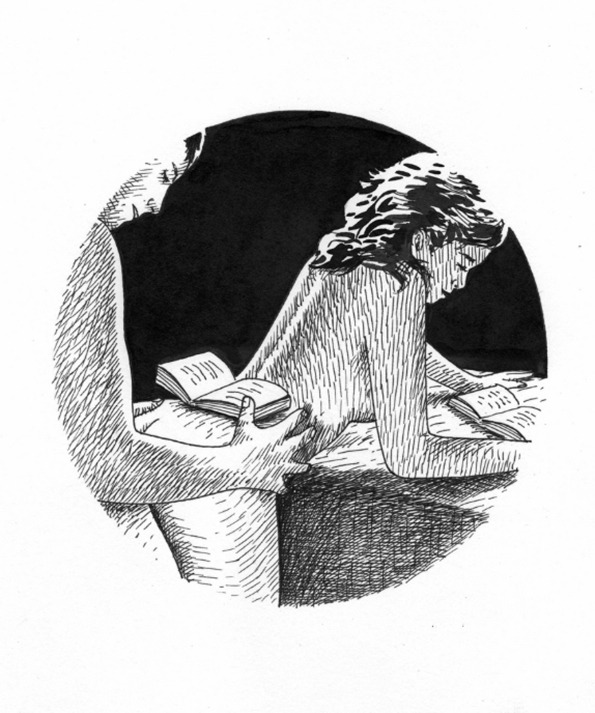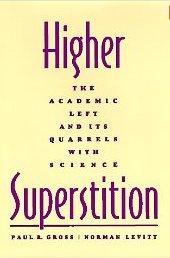
Written and commissioned by Iago Faustus, illustrated by erosarts.


Written and commissioned by Iago Faustus, illustrated by erosarts.

Original post here. This image was researched by Bacchus at ErosBlog as part of the “Γ commission.” The research was originally published at Hedonix as “Γ 021 – Favorite Pastimes.” Here is what Bacchus found.
This image is an artwork by cartoonist and painter Pablo Gallo. He published it here on his blog as part of a set:

His caption indicates that it’s an illustration from his 2010 book, El libro del voyeur (The Book Of The Voyeur). Elsewhere on his blog there’s a video “trailer” for the book offering glimpses of more illustrations from the book.
I decided to take a little break from fictional mad scientsts recently and devote some energies to reading something by a real sane scientist, in this case Yale psychologist Paul Bloom, who has a splendid new book out called How Pleasure Works: The New Science of Why We Like What We Like.
Now How Pleasure Works is a remarkably rich book in spite of its short length and it is difficult to do much justice to it in something like a blog post, but one major take-away therefrom is a lot of evidence for the thesis that the pleasure we take about things depends critically on our beliefs about their natures and histories, and not just their sensory properties.
Let’s bring that down a few levels: Bloom is defending at least three theses here:
That’s still abstract, so perhaps some illustrative examples will help:
I guess I read Professor Bloom’s book with unusual fascination, because if his understanding of pleasure is correct, it becomes easier for me to make sense of some of the stuff that spills from my fingers onto the page. Bizarre claim? Well, consider the notion that something has an essence that remains even if its perceptible qualities change. It’s a curious piece of common sense, only in light of which can a weird declaration like the following even make narrative sense:
Corwin holds the phial up. Its contents are pale green and appears to glow slightly.
CORWIN
And there we have her.
NANETTA
(looking fearful and disbelieving)
Her?
CORWIN
Anwei!
NANETTA
Anwei?
CORWIN
Yes, Anwei. The beautiful young Anwei, as liquid essence. Liquid girl! Feel..
Corwin tries to press the phial into Nanetta’s hand.
corwin
…she is still warm.
The conceit here relies on an essentialist notion. The appearance of what’s in the phial is a warm pale-green liquor, but its essence is that of a pretty young woman. (Hard to read this over without thinking that perhaps it’s a satire of the doctrine of transubstantiation, and perhaps that’s what it really is.) Without a certain kind of essentialist intuition, you wouldn’t even be able to make sense of the action here, which I am sure you can, even if you think it’s very weird.
Indeed, pretty much any kind of transformation fantasy relies on a certain kind of essentialist notion in order to be readily accessible. At the moment in Progress in Research when Willie and Professor Waite engage in their Freaky Friday Flip, we can still locate a character who is “really Willie” and another who is “really Waite” and make sense of characters who appear to be other that what they are on that basis.
Professor Bloom also spends rather a lot of time discussing cannibalism, of all things, drawing on the notion that somehow essences might be transmissible across objects (one anthropological explanation of cannibalism is that cannibals are trying to absorb properties of the people they are eating). He even discusses the notorious Armin Meiwes voluntary cannibalism case (don’t read if you squick easily). Fascinating, because I ran into that before. There’s an exchange between Jill and Iris in Study Abroad about Iris’s experience of being cannibalized but (maybe) surviving due to being re-created:
JILL
Why not just make a backup, and eat it?
IRIS
I did think to ask. I was told that the clientele thought that experienced meat tastes better.
BRIDGET
Ew.
Apparently the diners in Club Cuisine preferred eating a real American college student with a real life history to merely a simulacrum of one. Like I said, don’t read if you squick easily…
The notion of essences transmitted over history might also be of help in understanding phenomena like agalmatophilia. When Iris queries Mr. Takayama about why anyone would go the trouble to petrfy another person, he responds in terms that Iris can immediately understand.
TAKAYAMA
There will always be a deep appeal to whatever it was that was once alive. In luxury goods markets, real leather, real silk, real fur will always command a premium over their synthetic substitutes, precisely because of the seductive fact that they were all part of something once alive. Add to that the natural erotic appeal of a well-formed sculpture, and you can see commercial viability.
IRIS
Yes. I see. That was certainly the appeal I sensed behind the Club Cuisine.
A statute that was once a beautiful woman is a very different sort of thing from merely a statue of a beautiful woman, and (for at least some people) something that carries a vastly greater erotic charge.
Indeed, Paul Bloom’s analytical framework might even give a way of explaining what thaumatophilia is. It’s someone who gets a real kick out of pushing the boundaries on essentialism, either by imagining scenarios where appearance diverges wildly from essence (human subjects become liquid, or statues, or giant spider goddesses), or we push beyond our essentialist intuitions altogether: people are happy to be replaced with copies of themselves just to prove a philosophical point, or rejoice in being the fusion of two previously existing people.
A reflection that occured to me after reading Bloom’s book is that a thaumatophile is someone not content merely to be a sexual deviant. Ve wants to be an ontological deviant as well.
While I heartily encourage anyone interested in the subject of this post to buy How Pleasure Works, you can get good stuff for free on the subject by watching Professor Bloom’s recent Bloggingheads diavlog with Robert Wright. And I also heartily recommend this excerpt in the Chronicle of Higher Education on the pleasures of the imagination, something this site itself is all about and which is not merely and instructive discussion of pleasure, but a fine source of it.
Professor Corwin is surely right to observe that “…in salt water, Monsiuer Volt and Madame Ampere are not your friends,” although he’s slightly misquoting when he attributes the line to Charles Stross. He is at least showing decent taste in casual reading. The book he’s slightly misquoting from is this:
(Found at Stross’s website antipope.org, which has an even larger version here.) If you think it’s true. as I do, that it would be very cool to have a version of H.P. Lovecraft who in’t sex negative (or for that matter full of all sorts of racial anxieties), you must read this book, in the unlikely event you haven’t already.
This book and its companions are quite the send-up of the whole James Bond mythos as well.
 Sometimes the running sores of prior life experience don’t quite heal altogether and thus show up in things we write years or even decades later.
Sometimes the running sores of prior life experience don’t quite heal altogether and thus show up in things we write years or even decades later.
Adherents of the academic movement known as postmodernism, at least with respect to the the poseur attitudes they struck toward science and technology, were the viri that made me break out in such sores for years. Condescending, glib, smug…and for the most part shockingly ignorant of the substance of what they aimed to criticize. they blighted my academic years and left me with the enduring sense that the academic enterprise was at least in part fraudulent. So it was perhaps inevitable that I would create a character like Aphrodite Mora and the seminar she runs at Gnosis.
I wish I could point to something erotic about this particular scene, but sadly I find willfully cultivated obscurity something of a turn off. But I can at least point to a source text for the scene, which is to wit the excellent and witty book shown to the left, especially pp. 54-5 thereof. Enjoy!
Sensitive readers of The Apsinthion Protocol will probably have thought it more or less inevitable that once Moira Weir saw this picture in one of Professor Corwin’s publications
she would soon be in for a very wild ride.
There’s a certain element of controversy about tentacle sex. Most people associate it, if they associate it with anything, with Japanese animation that many people find nasty. This isn’t an entirely wrong association: there are some good reasons why tentacle sex is so prominent in anime, which go beyond the fact of an artistic tradition of which artists like Hokusai were a part. Helen McCarthy and Jonathan Clements, in The Erotic Anime Movie Guide, write as follows:
The visual grammar permitted by the tentacle is extremely useful to the pornographer. With no restriction on length, it permits penetration without blocking the view. It can be used as a form of restraint, permitting multiple penetration, sexualized bondage, and ease of camera access. Best of all for the tentacle as a pornographic device, while it may often look suspiciously like a penis, to the extent of possessing a foreskin or glans, or even ejaculating upon climax, it is not a sexual organ by definition. The Japanese film-maker can thus show as many as he likes, doing whatever he wishes, without falling foul of the usual censorship restrictions. The only problem with the tentacle is that the film-maker must find an excuse for its appearance. This is best accomplished by making monsters a feature of the storyline, be they demons, invading aliens, or creatures from the id. And since such creatures are evil by nature, it is a logical step in such porn to accentuate the incidences of rape and sexualized violence.
And that’s certainly a possibility, one that seems to fit into the conception that most people have of tentacle sex. If you’re so inclined you can go out and find whole blogs devoted to anime tentacle sex, a lot of which doesn’t look all that consensual, with names like tentaclehettaisex.com (enjoy if that’s what you’re into, disdain if that’s what you think tentacle sex necessarily is).
There are, naturally, alternatives, some of which have been explored by my blogging mentor Bacchus over at ErosBlog. A while back he posted on this image
Which suggests a very different idea of tentacle sex than the idea most people have. (More of Bacchus’s interesting blogging on the subject can be found here and here.)
Looking at these images makes one wonder (it certainly made me wonder) whether there couldn’t be tentacle seduction or, for that matter why the id of which the tentacles are supposedly the projection need necessarily be the male id. Why not the female id?
Amanda Gannon, in a post at Tor.com entitled “Sucker Love: Celebrating the Naughty Tentacle,” advances a congruent point.
There’s a particular detail in The Dream of the Fisherman’s Wife that convinces me that hers is a dream of such ecstasy. As the enormous octopus sprawls between her thighs, she has reached down and wrapped her hands tight around two of its embracing arms. She is drawing it toward her, not pushing it away. I don’t hesitate to say that gesture is familiar to me.
That passion is the same fantasy of every person who has ever dreamed of being carried off by pirates and ravished into a state of perpetual ecstasy, the same passion of the vampire’s orgasmic embrace, the werewolf’s bestial lusts, and so many more. The tentacles may be exotic, but the theme is familiar.
Think about that enough, and scenes like Moira’s encounter just sort of write themselves.